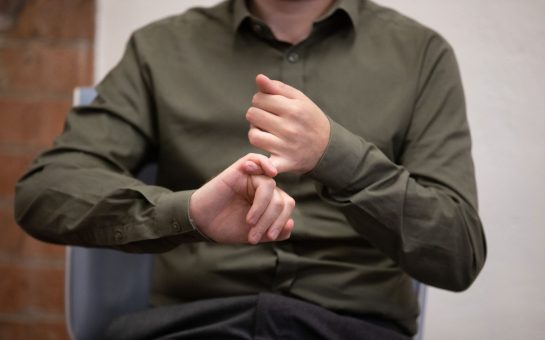By Ben Turner
June 30 2020, 12:00
Follow @SW_Londoner
The moment of discovery came for Christine in her daughter’s bedroom.
She had bought some sleep-meditation CDs to help her children get to sleep.
They told calming stories without much event, meant to occupy the mind as it drifts off.
One of them didn’t send Christine Jones’s daughter to sleep. She hated it. It left her wide-awake, and it filled her with a frustration that she couldn’t explain.
“She kept saying to me don’t turn that one on,” said Christine, 36.
Deciding to stay in the room and listen to it with her, Christine heard a woman’s soothing voice inviting the listener to imagine a desert island: the sand, the sea, the sky, a palm tree and the horizon.
“Don’t worry if you can’t picture it immediately, just relax and it will come,” said the voice.
Christine’s daughter was exasperated. “It doesn’t come!”
Christine understood her distress. She couldn’t picture the image either.
In that moment Christine realised that her daughter shared in a phenomenon she’d only learned she had herself a few years before, ‘Aphantasia’. Those who have it, around 2% of the global population, are unable to conjure mental images. They can see normally, but their mind’s eye is blind.
‘Aphantasia’, meaning ‘without imagination’ in Greek, was coined in a 2015 study conducted by University of Exeter neurologist Adam Zeman, 62.
He surveyed 21 volunteers who claimed they had no ability to recall any image: not of a holiday, or their wedding or the faces of loved ones.
“My parents still live there now, yet I can’t picture the sitting room of the house I grew up in,” said Christine.
Historical references to the condition are patchy. The naturalist Francis Galton conducted an 1880 study of the images that 100 men could remember from their breakfasts and was shocked to hear from 12 that they had no visual recollection.
“I was told by an art historian that 17th century Jesuits created special techniques for those who couldn’t visualise during devotional exercises,” Zeman said.
Most of the participants in his 2015 study told him they had realised there was something different about them between adolescence and early adulthood, but others like Christine only found out by chance encounters with reports covering his research.
Until that time they had always assumed that whenever people spoke of “picturing” something they meant it metaphorically.
“I probably bored everyone going on about it for a while,” Christine told me. “I definitely spent a few weeks wandering around being like: ‘No, seriously, do you actually see beaches?’”
One of the many remarkable implications of Zeman’s findings is that the most fundamental differences between all of our inner worlds are the ones most likely to go unnoticed. At least, that is, until they intrude upon us in the form of an epiphany.
“There are probably large invisible differences which we are unaware of,” he said. “Aphantasia makes quite a big difference to people’s inner lives, but it makes little difference at all to their functioning day to day. We have many different ways of representing the world in its absence.”
Christine is a scientist herself and feels strongly that her way of thinking and remembering predisposes her uniquely to her job.
“The important thing for me is not what a thing looks like, but what it’s doing. I see things in networks and processes,” she said. “I think if I had visual images it would feel quite intrusive, it would possibly even get in the way. It would be like I was living inside a dream.
Feature image credit: Susan Aldworth- Heartbeat 1




